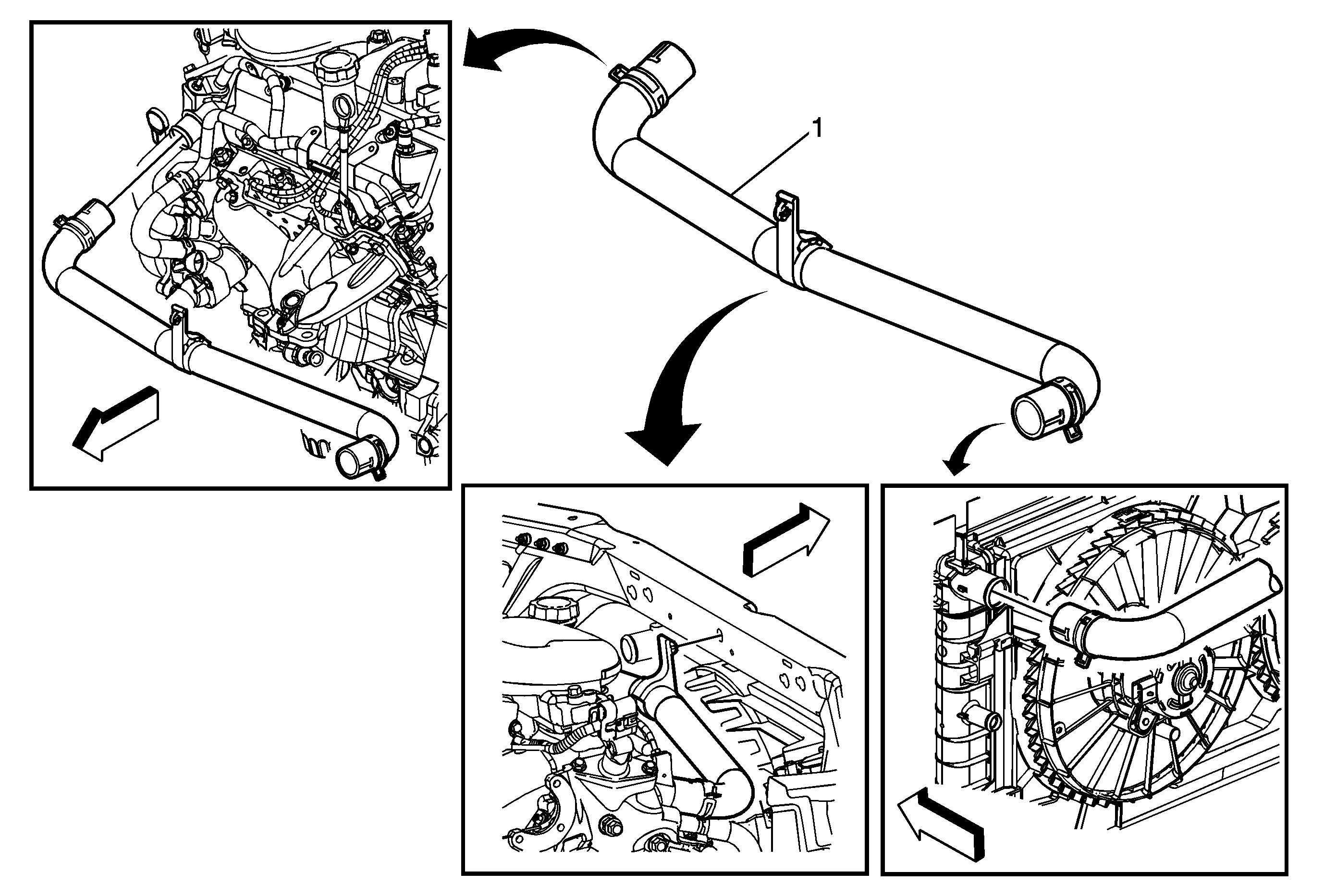Radiator Outlet Hose Replacement LXV
Removal Procedure
- Open the hood.
- Disconnect the battery. Refer to Battery Negative Cable Disconnection and Connection.
- Raise the vehicle by its full height. Refer to Lifting and Jacking the Vehicle.
- Remove the front compartment splash shield. Refer to Front Compartment Splash Shield Replacement
- Place collecting basin underneath.
- Drain the cooling system. Refer to Cooling System Draining and Filling.
- Loosen the radiator outlet hose clamp (5).
- Remove the radiator outlet hose (3) from the radiator outlet pipe (4).
- Lower the vehicle by its full height.
- Loosen the radiator outlet hose clamp (2).
- Remove the radiator outlet hose (3) from the water pump (1).
Warning: Unless directed otherwise, the ignition and start switch must be in the OFF or LOCK position, and all electrical loads must be OFF before servicing any electrical component. Disconnect the negative battery cable to prevent an electrical spark should a tool or equipment come in contact with an exposed electrical terminal. Failure to follow these precautions may result in personal injury and/or damage to the vehicle or its components.

Installation Procedure
- Install the radiator outlet hose (3) to the water pump (1).
- Install the radiator outlet hose clamp (2).
- Raise the vehicle by its full height.
- Install the radiator outlet hose (3) to the radiator outlet pipe (4).
- Install the radiator outlet hose clamp (5).
- Install the front compartment splash shield. Refer to Front Compartment Splash Shield Replacement.
- Lower the vehicle by its full height.
- Fill the cooling system. Refer to Cooling System Draining and Filling.
- Connect the battery. Refer to Battery Negative Cable Disconnection and Connection.
Radiator Outlet Hose Replacement 2.0L Diesel LLW

Callout | Component Name |
|---|---|
|
Warning: With a pressurized cooling system, the coolant temperature in the radiator can be considerably higher than the boiling point of the solution at atmospheric pressure. Removal of the surge tank cap, while the cooling system is hot and under high pressure, causes the solution to boil instantaneously with explosive force. This will cause the solution to spew out over the engine, the fenders, and the person removing the cap. Serious bodily injury may result. Preliminary ProcedureDrain the cooling system. Refer to Cooling System Draining and Filling. | |
1 | Radiator Outlet Hose ProcedureReposition the 2 radiator hose clamps using the GE-38185 pliers . Special ToolsGE-38185 Hose Clamp Pliers For equivalent regional tools, refer to Special Tools. |
